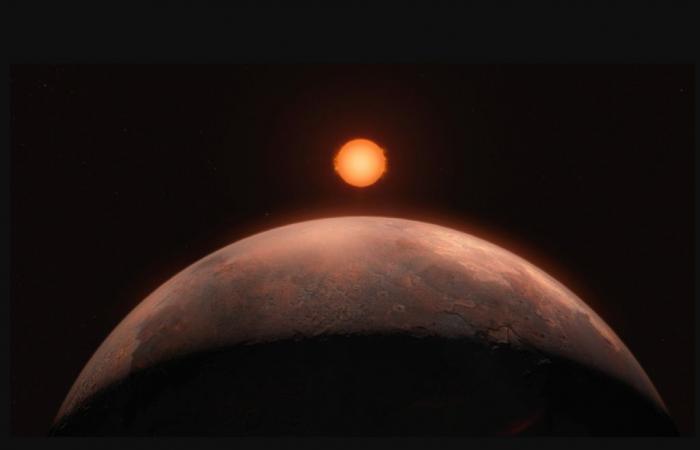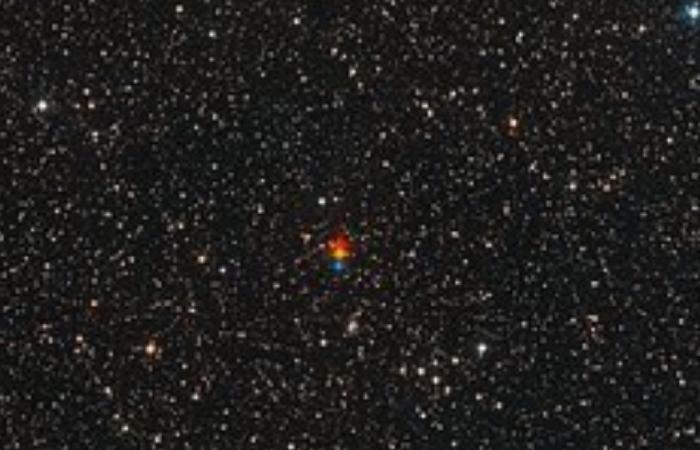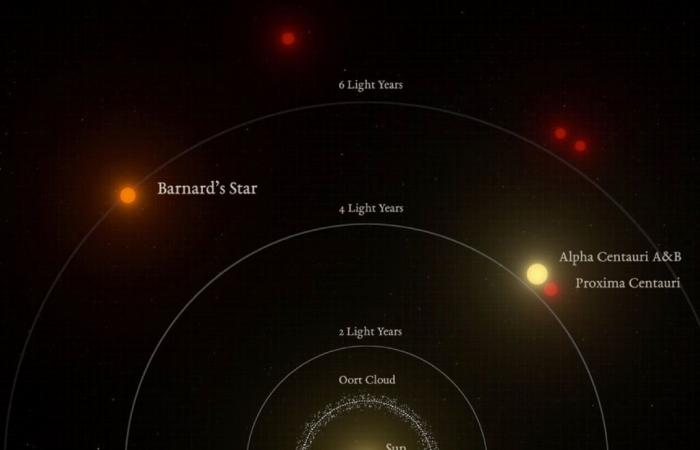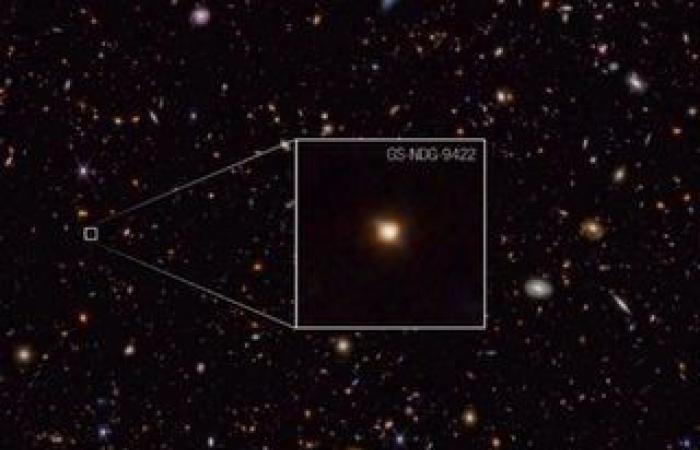It could be confused with the multitude of confirmed exoplanets; in fact, she ranks 5760th in the order of confirmations. However, this latest exoplanet, which was officially confirmed on October 1, is different from all the others: it is absolutely the closest to Earth around a single star.
Stars tend to be born not alone (or single) but in multiple systems, that is, systems composed of two or more stars that orbit a common center of mass.
The host star of this recently confirmed exoplanet is Barnard’s Star, named after its discoverer Edward Emerson Barnard, the closest star to Earth (after the Sun, of course). Even closer is a triple star system, whose brightest star is Alpha Centauri and which also hosts exoplanets.
Barnard’s Star
Barnard’s Star is the closest star to the Sun, only 6 light years away. She caught the attention of astronomer Barnard due to its rapid movement across the sky compared to more distant stars.
Its proper movement relative to the Sun is approximately 1 degree every 60 years. For stars, this is very rapid movement. It is estimated that by the year 11,800, it will have halved its distance from the Sun, towards which it is heading.
This star belongs to the category of red dwarfs.
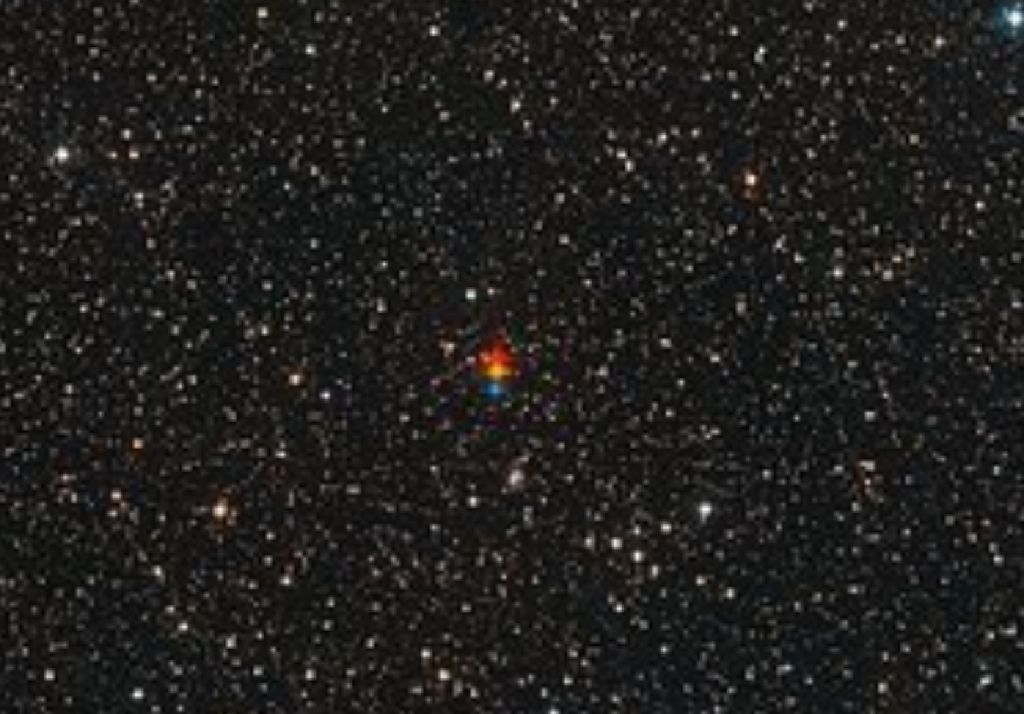
It has relatively small dimensions, less than half the radius of the Sun (which is a yellow dwarf) and a surface temperature much lower than that of the Sun. Its brightness is so weak that it is invisible to the naked eye.
Planet Barnard b
For decades, we suspected the existence around this star of not one, but two planets which, by their mutual gravitational attraction, disrupted its movement.
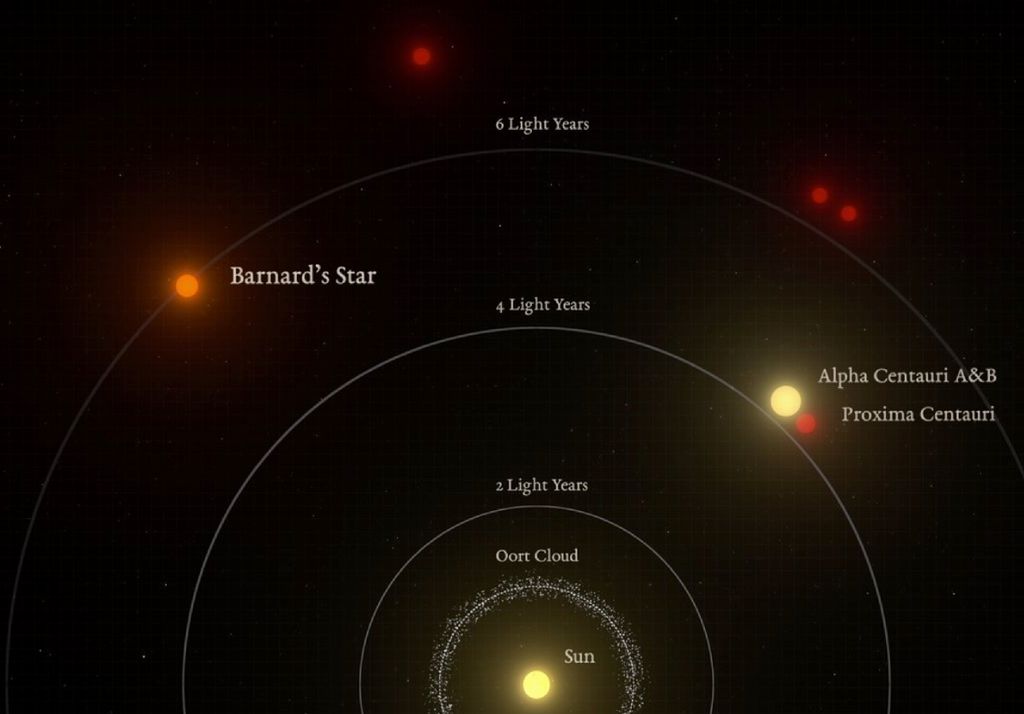
However, these had not received confirmation by other methods of searching for planets
When a planet is discovered using a certain method, it is classified as a “candidate” planet. It is “confirmed” if another method confirms its existence.
Confirmation of the existence of an exoplanet was provided by a team led by astronomer Jonay González Hernández, from the Instituto de Astrofísica de Canarias (Spain) thanks to 5 years of observations carried out with the Very Large Telescope (VLT) located at Cerro Paranal and managed by the European Southern Observatory (ESO).
The planet, conventionally called Barnard b, orbits its star with a period of approximately 3 days and is at a distance of about 1/20 of the Mercury-Sun distance.
It has a lower mass than Earth (about half the mass of Venus), but it is too close to its parent star. With a surface temperature of 125 degrees Celsius (due to its extreme proximity to the star), it is incapable of retaining liquid water on its surface. It is located outside the habitable zone.
Planet Barnard b, although very interesting because it is terrestrial, is outside the habitable zone.
But let’s see how we arrived at this discovery.
How she was discovered
The discovery was made using the radial velocity method, that is, the periodic oscillations of the star’s spectral lines due to radial motion (back and forth) relative to the common center of mass with the planet. The instrument used, mounted on the VLT, is the ESPRESSO spectrograph.
In addition to Barnard b, astronomers have found 3 other planets around this star, which however remain “candidates” awaiting confirmation.
The discovery of Barnarb b and previously of the planets Proxima b and d around the star Proxima Centauri shows that the environment of the Sun full of exoplanets, explains Alejandro Suárez Mascareño, also a researcher at the Instituto de Astrofísica de Canarias and co-author of the study.
Sources of information and references:
– A sub-Earth-mass planet orbiting Barnard’s star”, Gonzalez Hernandez et al. 2024, Astronomy & Astrophysics (in stampa) https://www.aanda.org/10.1051/0004-6361/202451311)

